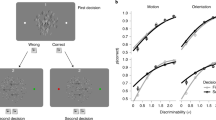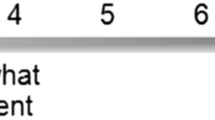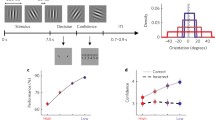Abstract
This study investigated whether experimentally manipulating problem-solving confidence had a causal influence on subsequent catastrophic worrying. While attempting to provide solutions to some real-life problem scenarios, subjects were given false feedback on their performance which suggested that their solutions were either very poor or very good. Subjects who experienced the procedure designed to decrease problem-solving confidence showed significantly lower self-ratings of problem-solving confidence, higher levels of self-reported anxiety, and subsequently a significantly increased tendency to catastrophize a personal worry than subjects who underwent the procedure designed to increase problem-solving confidence. The results show that changes in problem-solving confidence can have a causal effect on catastrophic worrying, and a multiple-regression analysis demonstrated that poor problem-solving confidence was a better predictor of catastrophizing than self-reports of anxiety taken immediately prior to the catastrophizing interview.
Similar content being viewed by others
References
Blankstein, K. R., Flett, G. L., & Batten, I. (1989). Test anxiety and problem-solving self-appraisals of college students.Journal of Social Behavior and Personality, 4, 531–540.
Butler, G. (1994). Treatment of worry in generalised anxiety disorder. In G. C. L. Davey & F. Tallis (Eds.),Worrying: Perspectives on theory, assessment and treatment. Chichester, England: Wiley.
Cramer, D., & Goodwin, D. (1986). Change in self-acceptance as a function of feedback and level of irrational beliefs in self-acceptance.British Journal of Cognitive Psychotherapy, 4, 61–72.
Davey, G. C. L. (1993). A comparison of three worry questionnaires.Behavior Research and Therapy, 31, 51–56.
Davey, G. C. L. (1994a). Pathological worrying as exacerbated problem-solving. In G. C. L. Davey & F. Tallis (Eds.),Worrying: Perspectives on theory, assessment and treatment. Chichester, England: Wiley.
Davey, G. C. L. (1994b). Worrying, social problem-solving abilities, and social problem-solving confidence.Behavior Research and Therapy, 32, 327–330.
Davey, G. C. L., Hampton, J., Farrell, J., & Davidson, S. (1992). Some characteristics of worrying: Evidence for worrying and anxiety as separate constructs.Personality and Individual Differences, 13, 133–147.
D'Zurilla, T. J., & Nezu, A. M. (1990). Development and preliminary evaluation of the Social Problem-Solving Inventory.Psychological Assessment: A Journal of Consulting and Clinical Psychology, 2, 156–163.
Flett, G. L., & Blankstein, K. R. (1994). Worry as a component of test anxiety: A multidimensional analysis. In G. C. L. Davey & F. Tallis (Eds.),Worrying: Perspectives on theory, assessment and treatment. Chichester, England: Wiley.
Hammen, C. L., & Krantz, S. (1976). Effect of success and failure on depressive cognitions.Journal of Abnormal Psychology, 85, 577–586.
Heppner, P. P., & Petersen, C. H. (1982). The development and implications of a personal problem-solving inventory.Journal of Consulting Psychology, 29, 66–75.
Johnston, W. M., & Davey, G. C. L. (1996).The psychological impact of negative TV news bulletins: The catastrophizing of personal worries. British Journal of Psychology, in press.
Kendall, P. C., & Ingram, R. E. (1987). The future for cognitive assessment of anxiety: Let's get specific. In L. Michaelson & L. M. Ascher (Eds.),Anxiety and stress disorders: Cognitive-behavioral assessment and treatment. New York: Guilford Press.
Platt, J. J., & Spivack, G. (1975). Unidimensionality of the Means-Ends Problem-Solving (MEPS) procedure.Journal of Clinical Psychology, 31, 278–281.
Tallis, F. (1990).How to stop worrying. London: Sheldon Press.
Tallis, F., Davey, G. C. L., & Cappuzo, N. (1994). The phenomenology of nonpathological worry: A preliminary investigation. In G. C. L. Davey & F. Tallis (Eds.),Worrying: Perspectives on theory, assessment and treatment. Chichester, England: Wiley.
Vasey, M., & Borkovec, T. D. (1992). A catastrophizing assessment of worrisome thoughts.Cognitive Therapy and Research, 16, 505–520.
Watson, D., & Tellegen, A. (1984). Toward a consensual structure of mood.Psychological Bulletin, 98, 219–235.
Author information
Authors and Affiliations
Additional information
The authors would like to thank Alison Dixon for her help during the experiment, and to two anonymous reviewers for their helpful comments on an earlier draft of this paper.
Rights and permissions
About this article
Cite this article
Davey, G.C.L., Jubb, M. & Cameron, C. Catastrophic worrying as a function of changes in problem-solving confidence. Cogn Ther Res 20, 333–344 (1996). https://doi.org/10.1007/BF02228037
Issue Date:
DOI: https://doi.org/10.1007/BF02228037




